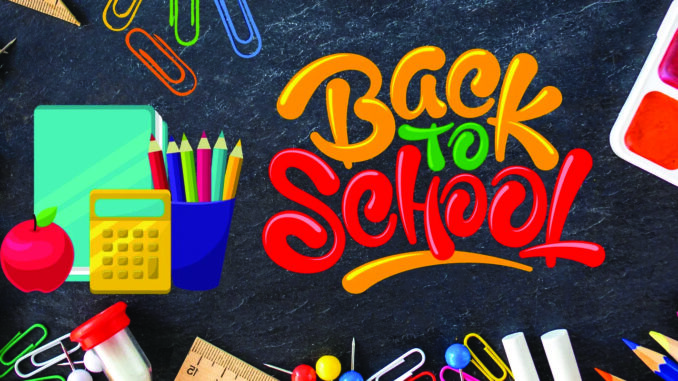
 Should Black Parents Trust Schools to Teach Their Kids How to Read?
Should Black Parents Trust Schools to Teach Their Kids How to Read?
By Maya Pottiger Originally appeared
in Word in Black
Between summer camp, family vacations, and partaking in some well-deserved rest and relaxation, reading is often not at the top of students’ list of summer priorities.
But it should be.
Though reading achievements have improved in nearly every grade level since Spring 2021, they still aren’t quite reaching pre-pandemic levels. And, as a July 2022 Northwest Evaluation Association report found, the largest achievement declines are still among Black and Hispanic students, who were disproportionately impacted by the pandemic across the board.
The “Summer Slide” has always been real, and as young Black students from low-income backgrounds continue recovering from the many ways the pandemic has impacted their education, they’re fighting an uphill battle.
“Students from low-income backgrounds are even more at risk, as they are less likely to have access to consistent and effective summer programming and support,” says Katie Potter, senior literacy manager at Lee & Low Books. “During the pandemic, summer programs needed to pivot and support all aspects of a child’s learning, like social and emotional learning and physical and mental wellbeing, that were missed due to virtual schooling.”
Students from low-income backgrounds are even more at risk, as they are less likely to have access to consistent and effective summer programming and support.
But summer reading is critical to ensuring both academic and lifelong success.
“Whether it’s playing basketball or reading,” says Kathy Lester, a school librarian in Plymouth, Michigan, and president of the American Association of School Librarians, “to really get good at something, you have to practice.”
As a classroom teacher, Ahjah Gage saw the decline in literacy levels firsthand. Now, as co-founder and associate director of The BLAC Project, she works to promote literacy as a means to uplift Black and Brown people.
“Unfortunately, it disproportionately affected the Black and Brown children even more,” Gage says. “We continue to serve so that we can continue to better our community, because we see that there’s a lacking in that, especially in the last three years.”
What Do the Numbers Say?
Hidden in Plain Sight, a Learning Heroes survey, found that 71% of teachers are worried about students’ reading skills, compared to 39% of all parents and only 36% of Black parents. This could be explained by the pressure teachers feel from standardized testing and reading retention laws, Lester says.
Learning Heroes: Hidden In Plain Sight
“Teachers might feel a lot of that pressure and see where their kids actually are,” Lester says. “Maybe parents don’t see that same urgency.”
But there’s more to it than that. Prior to the pandemic, literacy levels in marginalized communities were already low, says Levy-Christopher, “starting with parents and trickling down to the children.”
“A lot of it is an education issue with the parents and family,” she says, “and then other issues, like books are expensive to buy.”
Black parents were above average when it came to supporting their children in writing and reading skill development over the summer, with 49% of Black parents citing this as a plan of action compared to 42% of all other parents.
A previous survey conducted in 2021, Out-of-School Time Programs, found falling behind academically and losing interest or motivation to learn is among parents’ top concerns for their children, with Black parents more significantly worried about the latter.
According to the survey, Black parents primarily view reading as a skill to be learned at school (37%), not at home (13%) or in out-of-school programs (16%). However, when enrolled in out-of-school programs to help with reading, Black parents report their children doing significantly better, with 49% reporting above grade-level reading through out-of-school programs compared to 35% who don’t participate.
Children don’t learn the same way, Gage points out, so having a diverse set of summer and after-school programs can help kids reach levels that traditional schools don’t.
i-Ready: Understanding Student Learning
“The Black experience, when it comes to educational institutions, is vastly different from the wider experience, and I think that’s something that parents also need to take into consideration,” says Rochelle Levy-Christopher, founder and CEO of The BLAC Project. She adds that, whether it’s reading, science, or math, “everything needs to be reinforced at home. There’s so much time spent for kids outside of school … that parents shouldn’t rely solely on school for any type of education.”
Early elementary grades are where we’re seeing the lowest number of students at grade-level reading, according to a Curriculum Associates report. The largest differences between pre-pandemic levels and current levels are in grades 1-3, with the most significant change in second grade (6%). This matters because students who aren’t “highly proficient” in reading by the end of third grade are more likely to drop out of school.
And, according to Education Week, Black and Hispanic first-grade students have fallen further behind than their white peers in terms of reading levels. The share of Black first graders meeting grade-level standards fell from 51% to 37%; Hispanic students fell from 54% to 42%; and white students from 65% to 58%.
Education Week
But Learning Heroes found that, in May 2022, 49% of parents thought their children were above their grade-level reading standards.
Reading early and often matters, Potter says.
“In order to combat the summer slide and learning loss that has occurred during the pandemic,” Potter says, “setting consistent and achievable reading behaviors and habits at home provides children with opportunities to be successful in the classroom.”
What Can Parents or Guardians Do?
If you’re stuck on ways to get your children to read,, fortunately our experts have some advice:
Talk to the school librarian. During the school year, librarians get to know students and what interests them, so they can likely offer specific book recommendations.
Be open-minded to variety. “Let kids have that choice,” Lester says, whether it’s reading a graphic novel or audiobook, or sitting at the kitchen table or curled up on the couch. “Especially during the summer, it should be more around enjoyment.”
Pair the book with an activity. Whether you read a short article about gardening or a book about cooking, connect that with a real-world activity. Head out to the garden or roll up your sleeves in the kitchen to make the words more relatable.
Foster their interests. Whether it’s a book about princesses, politics, or quantum physics, let kids read about what interests them. “It’s still reading,” Levy-Christopher says. “Meet them where they are. From that core interest, then you can expand from there.”
Make it interactive. Do a Q&A after a chunk of the book. Or have them read instructions for something you’re putting together. These will help build comprehension and overall literacy skills. “I don’t want people to pigeonhole themselves,” Levy-Christopher says. “Think outside the box.”
Create a rewards system. Everyone is motivated by check marks and treats. Whether it’s a daily chapter quota or monthly book total, reward the progress!
Tap into local resources. Enroll your kids in a summer book club or check the library for summer reading programs to get access to books and make reading more social.
Empower your young reader. Lee & Low created several reading lists full of books about Black children, like Books About Joy and the Diverse Summer Reading List. They also suggest Black biographies showcasing lesser-known historical figures, like Garrett Morgan and Vivien Thomas. “Ask children to think about why these ‘unsung heroes’ aren’t frequently taught and what they can do to learn about other prominent Black people that are not included in a traditional curriculum,” Potter says.
****************************************************

Congresswoman Wilson Announces Additional $155 Million To Florida School Meal Programs
Submitted by Karol Molinares
MIAMI, FLA. – Today, Congresswoman Frederica Wilson (FL-24) announced that school meal programs, as well as child and adult day care providers, in Florida will receive an estimated $155 million in additional funding this school year through the Keep Kids Fed Act.
In June, Congresswoman Wilson voted to pass the Keep Kids Fed Act to ensure that schools can continue providing meals for students despite ongoing supply chain issues. The legislation allowed the Department of Agriculture (USDA) to provide additional assistance to child nutrition programs by reimbursing them at a higher rate as they continue to serve healthy meals.
“When our kids are hungry, they aren’t ready to learn,” said Congresswoman Wilson. “As a lifelong educator, I’ve seen firsthand just how important they are for students of every age and grade level. I’m proud of House Democrats for putting our kids first and funding these crucial school nutritional programs.”
Under the bipartisan Families First Coronavirus Response Act (FFCRA), Congress provided USDA with key flexibilities to help child nutrition programs continue serving children during the COVID-19 pandemic. This relief helped feed hungry students during the school closures, virtual learning, and social distancing that disrupted traditional meal service. Without the Keep Kids Fed Act, important flexibilities provided under FFCRA would have expired on June 30, 2022.
******************************************************
Homeless Education Assistance Resource Team (HEART)
 The McKinney-Vento Homeless Assistance Act of 1987 is a United States federal law written as a legislative response to homelessness. It has been reauthorized several times and it was recently amended by the Every Student Succeeds Act of 2015. These very important federal laws protect the educational rights of students (PreK-12th grade) who have lost housing and are experiencing homelessness. The goal is to remove barriers that might prevent students experiencing homelessness from enrolling, attending, and succeeding in school.
The McKinney-Vento Homeless Assistance Act of 1987 is a United States federal law written as a legislative response to homelessness. It has been reauthorized several times and it was recently amended by the Every Student Succeeds Act of 2015. These very important federal laws protect the educational rights of students (PreK-12th grade) who have lost housing and are experiencing homelessness. The goal is to remove barriers that might prevent students experiencing homelessness from enrolling, attending, and succeeding in school.
 Students experiencing housing instability (whether residing with a parent, legal guardian, caregiver, or unaccompanied children and youth) are those who lack a fixed, regular and adequate nighttime residence. This includes sharing the housing of other persons “doubled-up” due to loss of housing, economic hardship, or similar situation; living in motels, hotels, trailer parks or camping grounds due to the lack of alternative accommodations; living in emergency or transitional shelters; abandoned in hospitals; living in a public or private place not designed for or ordinarily used as a regular sleeping accommodation for human beings; living in cars, parks, public spaces, abandoned buildings, substandard housing, bus or train stations, or similar settings. Migratory children and youth living in circumstances described above also qualify for McKinney-Vento Homeless Education services. Visit www.browardschools.com/Page/35699 or call 754-321-1550 for more information.
Students experiencing housing instability (whether residing with a parent, legal guardian, caregiver, or unaccompanied children and youth) are those who lack a fixed, regular and adequate nighttime residence. This includes sharing the housing of other persons “doubled-up” due to loss of housing, economic hardship, or similar situation; living in motels, hotels, trailer parks or camping grounds due to the lack of alternative accommodations; living in emergency or transitional shelters; abandoned in hospitals; living in a public or private place not designed for or ordinarily used as a regular sleeping accommodation for human beings; living in cars, parks, public spaces, abandoned buildings, substandard housing, bus or train stations, or similar settings. Migratory children and youth living in circumstances described above also qualify for McKinney-Vento Homeless Education services. Visit www.browardschools.com/Page/35699 or call 754-321-1550 for more information.
************************************************************
 Greetings Parents and Scholars,
Greetings Parents and Scholars,
I cannot believe the school year is upon us and summer break is winding down. I write this message with great excitement for our scholars. I know greatness comes from 33311 because this is our home. I also know that hard work pays off and we should have faith in ourselves and our scholars.
Here is some important reminders and a list of things to do before the 2023/24 school year kicks off:
Register your scholar for school.
If applicable. Make sure the school choice application is completed (www.browardschools.com; school choice 2023/24)
All Medical forms such as physicals should be updated, completed, turned in to your scholar school.
Adhere to uniform policy and color(s)
Attend Meet and Greet to get familiar with your child teacher(s) and class schedule.
Set high expectations for your scholar(s)
Build positive relationships with your scholar’s school, teacher, and community.
Fill out necessary back to school paperwork that your scholar will bring homex It’s imperative you return all paperwork.
How will your child be getting home. Make sure you know this before the first day of school.
Time is of the essence! Make sure your scholar arrives to school on time. Instruction begins promptly.
Make sure your scholar gets a good night rest and breakfast daily.
Insert-Mental Health is important. Start by having daily discussion with your scholar. For example, how was you day? What was one thing you could’ve changed about today? How are you feeling? Daily Affirmations. Social Emotional (SEL) tips….. www.browardschools.com; Mental Health& Wellness Portal
Stop by your local library to get your scholar a library card. It is free!
Check your scholars bookbag for vital information and homework.
Homework is practice for what your scholar learned throughout the school day.
Connect to with ways to communicate with your scholars teacher; Class Dojo, school planner, or parent link.
Attend at least 2 parent-teacher conferences per school year to check your scholar progress.
If your child is struggling with academic: check out free tutoring at your scholar school or a local tutor or tutoring services.
Parents remember you are your child(ren) first advocate. In addition, it truly takes a village to raise a child.
Have a successful and blessed school year!
Ms. Shawanna Taylor
************************************************
By Healthy Children.org
Before it’s time to head back to school, follow these tips to help ensure your kids have a safe, happy, and productive year.
Make the first day of school easier
Remember that you don’t need to wait until the first day of class to ask for help. Schools are open to addressing any concerns a parent or child might have, including the specific needs of a child, over the summer. The best time to get help might be one to two weeks before school opens.
Take them to visit the new school or classroom before the first day of school. Many children get nervous about new situations, including changing to a new school, classroom or teacher. This may happen at any age. It can be helpful to rehearse heading into the new situation. Remind them that there are probably a lot of students who are uneasy about the first day of school. Teachers know that students are nervous and will make an extra effort to make sure everyone feels as comfortable as possible. If your child seems nervous, ask them what they are worried about and help them solve the problem-solve ways to master the new situation.
Point out the positive aspects of starting school to help your kids look forward to the first day of class. Talk about how they will see old friends and meet new ones, for example.
Find another child in the neighborhood you child can walk to school or ride with on the bus.
If it is a new school for your child, attend any available orientations and take an opportunity to tour the school before the first day. Bring your child to school a few days prior to class to play on the playground and get comfortable in the new environment.
If you feel it is needed, drive your child (or walk with them) to school and pick them up on the first day. Get there early on the first day to cut down on unnecessary stress.
Consider starting your child on their school sleep/wake schedule a week or so ahead of time so that time change is not a factor on their first couple of days at school.
**************************************************
Posted by Litonya Gant
Certain activities are counterproductive to sleep and may cause your child to form unhealthy habits. Of course, every child is different and you may find it takes some trial-and-error to find out what works best for your family. However, when crafting your child’s bedtime routine, try to stick to the following advice:
Do:
Do it every day: A nighttime routine for kids should consist of the same steps every night
Keep it short and sweet: For most children, a bedtime routine should last around half an hour, or a little longer if there’s a bath included. Prolonging the routine can delay bedtime and makes it harder to implement on days when you’re short on time.
Keep it up during the day: Following a routine during the day, including setting clear limits, leads to increased sleep duration Getting lots of exercise, sunlight, and outdoor time during the day can also help them sleep better at night.
Listen to your child: Although you’re ultimately in charge, it’s not a bad thing to leave your child some liberty. If a part of the bedtime routine isn’t working for your child, listen to their concerns and adapt the routine if necessary.
Follow sleep hygiene rules: Keep the bedroom dark, cool, and quiet to promote sleep. If your child is scared of the dark, you can use a dim nightlight. Even after bedtime, noise levels in the rest of the house can keep young children awake so try to transition to quieter activities once you’ve tucked the kids in.
Make gradual changes: Try not to introduce more than one change at a time to the bedtime routine, and consider delaying these if there are other changes going on, such as moving to a new house or starting school. As your child’s sleep needs change, shift bedtime by 15-minute increments each night.
Don’t:
Start when they’re already sleepy: Overtired children can be hyperactive or grumpy and will find it even harder to fall asleep, so try to start the routine before they start yawning.
Let them use screens: The blue light from television and other electronic devices has serious consequences for sleep if used too close to bedtime.
Let them run around: Your child should have plenty of opportunities to burn off steam during the day, but don’t let them work themselves into a frenzy at night or they’ll be too wired to sleep.
Give sugary treats or caffeine: Try to keep evening snacks light and healthy. Caffeine will keep kids awake, and sugary treats before bed can lead to cavities Breakfast cereals, chocolate, and pudding can be sources of caffeine you may not expect. If your baby is bottle-feeding, remove the bottle before they fall asleep.
Read scary bedtime stories: Avoid scary stories and other mentally or physically stimulating activities before bed.
Let them sleep in on weekends: It’s tempting to catch up on sleep on non-schooldays, but straying more than an hour from the usual wake-up time can actually cause trouble falling asleep on.
Bedtime Tips for Toddlers, Kids, and Teens
It’s natural to adapt bedtime routines as your child grows
In early childhood, many toddlers are gripped by the throes of separation anxiety. This is a good time to introduce a stuffed animal or comfort blanket for extra reassurance when you leave the room.
Toddlers will also try to assert their newly found independence by acting out or resisting bedtime. You can head off their stalling tactics by letting them make some of their own decisions, such as what pajamas to wear or which book to read. You may need to exert some creativity to make the bedtime routine more fun. When it’s time for lights-out, calmly and firmly bid them goodnight, and leave the room.
Once children hit school age, they’re ready to take on more responsibility. Encourage them to take an active part in the bedtime routine by brushing their own teeth and tidying up their bedroom before bed.
Teens have a better idea of what their bodies need, so you can give them more freedom over how they prepare for bed. That said, try to reign in weekend sleep-ins so they don’t throw their bodies out of sync by the time Monday morning rolls around.
***************************************************
 Back-to-school anxiety: How parents can help children cope with it
Back-to-school anxiety: How parents can help children cope with it
As the summer months come to an end, school is set to begin. For some children, that can feel scary or stressful. “You know, it’s not just a thing in terms of getting back into a routine, but some kids are going to have some social anxiety,” Mary Jo Horton, Behavioral Health Manager at Memorial Health, said. “Some kids are going to be anxious about new experiences.”
That’s why according to Horton, it’s critical for parents to be super mindful of the anxiety you as a parent may be putting off. “So the more that adults are emoting the anxiety, the kid is going to absorb that,” Horton said.
If your child is new to a school, a tour of the campus could make a huge difference. “I also think then teaching a backup plan,” Horton said. “The backup plan looks like this: When you are lost and uncertain, this is the person you can go and touch base with.”
It helps the child feel safe, and according to Horton, it also empowers them to meet their own needs in the future. “It helps them learn how to problem solve,” Horton said. “They can then develop some resiliency in solving those problems because we don’t want to provide an idea that we’re always going to have all the information. Life is really about navigating the unknown.”
And anxiety isn’t always attached to fear. There’s also anxiety and disappointment or sadness. “I think that understanding what anxiety is hanging out with makes anxiety not so overwhelming and also provides us more insight,” Horton said.
Also, let children know it’s normal to feel anxious. Learning how to cope with it is key, by talking it out, journaling or practicing self-care. “Anxiety is OK,” Horton said. “Anxiety doesn’t need to be feared. We should feel anxious because that means that we’re engaged in our lives.”
If your child is still anxious after a normal transition period of three to four weeks and they’re isolating themselves or saying things that concern you about their safety, Horton says you should seek professional help.
************************************************************
 Distance Learning Makes It Harder for Kids to Exercise
Distance Learning Makes It Harder for Kids to Exercise
(Source Black Health Matters.Com)
This fall won’t feel much like “back to school” for many children. Instead, many are staying at home and attending virtual classes indefinitely.
According to the Center on Reinventing Public Education, a nonpartisan research center, about 25 percent of United S. school districts have started the year fully remote. This means that children will miss out on vital opportunities for educational, social and emotional development. And, as is familiar during this pandemic, the impact will be unequal: Children in underresourced districts are more likely to be remote learners. These children are hardest hit by school closures as they are more likely to lack access to necessary technologies and are less likely to receive parental help with their learning. They will also lose out on easy access to school meals.
But there’s another harm done by school closures: a child’s ability to be physically active. We are researchers at Johns Hopkins University studying physical activity and its impact on public health. Based on our research, we believe the pandemic is exacerbating health disparities among children and having significant impacts on their physical, social and cognitive development.
Children not in school don’t have recess or physical education classes. They aren’t walking to school or to a bus stop. Generally, they can’t participate in school teams or clubs that promote physical activity either (although in some school districts, team sports may go ahead even while in-person education does not).
What’s more, children have traditionally been less physically active in the summer than during the school year, with notable differences by race and ethnicity. And given the punishing trajectory of the pandemic, it is not clear when those prospects for physical activity will be available again.
The U.S. Department of Health and Human Services recommends that children between ages 6 and 17 engage in one hour of moderate to vigorous physical activity per day. That can improve a child’s physical and mental health and prevent the onset of chronic disease, including type 2 diabetes, heart disease and some cancers.
Physical activity and active play can also be a source of joy for children. As they socialize with peers, they find pleasure in moving their bodies and developing their strength and physical literacy. Many of us look back fondly on childhood memories of soccer games and running around until we tire ourselves out, a delight every child deserves.
Schools, of course, are not perfect when it comes to meeting children’s physical activity needs. Physical education is chronically underfunded, and Black and Latino children typically lose out the most. Even so, schools provide some opportunities for children to be well and healthy.
A child’s decrease in physical activity is not only a public health issue. It’s also a matter of fairness.
Prior to the pandemic, children from low-income communities and communities of color already experienced greater challenges in accessing physical activity opportunities. They were already less likely to meet physical activity recommendations because of a lack of affordable options. There are also safety issues, challenges to parental support and a neighborhood environment that doesn’t foster play and physical activity.
As more activities have moved outdoors to decrease the risk of virus spread, these inequities are felt more than ever before. In many cases, the parents of children in low-income communities are essential workers who can’t be home to support either learning or physical activity. Private backyards for play are frequently missing, and public spaces are often inadequate.
The weather poses additional barriers. Because of less green space and tree canopy, low-income neighborhoods tend to be hotter in the summer, sometimes significantly so, than higher-income neighborhoods in the same city. They also have poorer air quality. In the winter, many families can’t afford a warm coat, which makes outdoor play more difficult.
These are not intractable problems. Solutions exist to promote a child’s active outdoor play. Some strategies work in all settings, although urban, suburban and rural environments will have to vary approaches. But in all cases, it’s essential that children have the clothing and nourishment they need to play outside through all types of weather.
First, supervised play can take place on unused school yards through policies like joint use agreements. This should not be a heavy lift, as schools are usually in centralized locations and they already support active play.
Second, many cities worldwide have increased access to public spaces during the pandemic. They have closed down entire streets and driving lanes and replaced them with activity areas. These efforts can be expanded to focus on children by creating specialized spaces for child-friendly games. This was already happening before the pandemic: Initiatives such as Play Streets, where neighborhood blocks are shut down to promote play, were becoming popular. This can be a model, albeit with additional safeguards built in to promote physical distancing.
The pandemic has created previously unimaginable challenges for so many of us. Children’s health and well-being, particularly for those facing significant barriers, must be a priority.
—Katelyn Esmonde & Keshia Pollack Porter
********************************************************
 If your child has autism or ADHD
If your child has autism or ADHD
If your child has autism or ADHD, the otherwise exciting prospect of making new friends or taking in the smell of freshly sharpened pencils at the start of a new school year can sometimes be a traumatic experience.
After speaking to Mary Cunniff, a decades-serving specialist in occupational therapy and special needs education in Massachusetts, we’ve assembled this list of 12 essential school supplies that may comfort those with any kind of neurodivergence on the ASD spectrum. From fidget ADHD toys to calm strips, these simple and cheap tools may be just as essential as pens, markers, and crayons.
- Hand fidget toys, pens, and pencils
When it comes to making the day-to-day activities of school more bearable for children with ADHD or autism, having access to a wide assortment of fidget toys is essential. This highly rated fidget toy set from Austor ($11) features a small marble in a tactile nylon pouch capable of bending, squeezing, twisting, or any other motion that may help your child maintain focus despite their active hands. This pack comes with 20 multi-colored toys, which should include more than enough fidgets to get you through the first few months of the year. For similar reasons, it might also help to purchase a fidget pen, like this six pack from Abhay ($13). You can also get a pack of fidget pencil toppers that add sensory feedback to any standard pencil.
These discreet fidget mazes from LakiKid are a nice alternative when a smaller fidget toy won’t do. Kids who are easily distracted love the sensory-laden fabric and the small weighted marble. The product combines the security of a blanket and the sensory appeal of a small object to help keep kids occupied. There are many versions of fidget mazes available to try, but we like this one because discreet enough to avoid being distracting during school hours. Children can engage in this repetitive, manipulative task without inadvertently averting attention away from an important lesson.
If you child needs feeding or speech therapy, this Buzz Buddy from Special Supplies can be a great means of oral stimulation to prepare their mouths for talking or eating in ways that may be unfamiliar. This all-encompassing set features a vibrating base and six interchangeable heads based on whatever sensation is most pleasing to the user. Once the head is turned on, there are low, high, and pulsating vibration modes as well. The device even comes with a slick carrying case to ensure its pieces don’t get lost. Buying a standard electric toothbrush might also provide similar benefits in a pinch, but Buzz Buddy is a highly rated product with many happy owners and reportedly great customer support.
- Lap pad or a small weighted blanket
The Writable Weighted Lap Pad is perfect in the classroom and for travel.
Weighted blankets are a known source of comfort for children and adults who routinely encounter anxiety, which makes weighted lap pads like this 3-pound lap book ($25) from Little Chubby One a smart purchase. Its light weight is comforting but not so heavy that it will make your kid drowsy in class. And, in case the weight of the blanket isn’t enough to reduce fidgets, it’s possible to draw on the pad using a special water pen. It’s wipeable, washable, and capable of keeping your child calm when stimuli might otherwise be uncomfortable. If you think the drawing feature might be too distracting, you can always get a more traditional small weighted blanket ($19) instead.
- Earplugs or headphones to quiet the noise
These earplugs specialize in noise reduction when overstimulation from loud noises may happen.
People with autism or ADHD may be sensitive to loud noises, making a pair of earplugs a sensible back-to-school companion if they’re about to enter a classroom with as many as 30 screaming children. We’re partial to these Loop Experience Pro earplugs, that fared well in our own accessibility testing. In the context of school, we love that the Experience Pros focus on reducing sound up to 23 decibels without trying to block it out completely. Furthermore, their multi-size, discreet in-ear profile makes these buds far less conspicuous than a traditional pair of noise-canceling headphones. These earplugs offer a more tailored sound-reducing result that won’t break the bank.
- Lycra fabric or a Lycra body sock
Lycra is a great machine-washable fabric with strong sensory potential.
Stretchy Lycra fabric can be a soothing sensory mechanism for those on the spectrum or in need of calm. With that fact in mind, a product like this Sanho Sensory Sock is perhaps best suited for overnight use or wearing around the house to keep your child content during the school transition. In a pinch, it might be just as easy to buy 2 yards of Lycra fabric and roll your kid up in the material like a burrito. As silly as that may sound, the process sometimes offers the precise type of sensory and security feedback some children find appealing.
- Anxiety coloring pages
Get lost within the pages of the Anxiety Relief Coloring Book.
Coloring pages are a calming task for younger children to complete, but did you know they can be just as helpful for teens and adults as well? That’s where products like this Anxiety Relief Coloring Book from Magical Planet come in. For just a few dollars, you’ll get a collection of 34 black-and-white prints for your coloring pleasure. Filling in the small, detailed areas with a new hue can be a satisfying and soothing process during moments when a child or adult with ADHD may be feeling insecure. When the outside world may seem troubling, coloring offers a simple outlet for overactive minds to focus on. This book easily slides into any backpack, ready to be accessed at a moment’s notice.
- Calm strips or Velcro for simple soothing
These velcro strips can placed anywhere like the back of your smartphone, your tablet, or even your favorite book!
Back in the realm of simple soothing, Calm Strips are a popular product for anxiety or those on the spectrum who have trouble paying attention in class. For about $14, you can buy 50 of these textured calm strips to fiddle with whenever your child’s hands are tempted by impulsive behaviors. Some educators even put Velcro strips under a student’s desk, with either the rough or soft part of the strap facing outward based on the type of sensory feedback the child likes. It can be hard to stay calm when the world feels chaotic, but Calm Strips offer an insanely cheap fix that’s very appropriate for the classroom.
- A means of flexible seating
Traditional seating while doing schoolwork doesn’t work for everyone, so try this clever alternative from ECR4Kids.
Coping with autism or ADHD is all about falling into the right routine, and, in school, that might involve finding a comfortable seating method for your kid. Something like this cheap lap desk from ECR4Kids ($38) or a stool could be suitable for any age, while younger kids may be partial to a small Yoga Ball Chair ($23) instead. Since your child will be seated for long periods of time, flexible seating might be the most important part of them making it through a long day.
- Typing games for simple focus
Laugh and learn typing with Mickey Mouse and his friends.
Most of us likely have fond memories of playing typing games in the school computer lab. In addition to being fun, educational games can also function as an easy means of focus for people with ADHD or kids on the spectrum. There are plenty of free typing exercises for children online, but this double pack includes two bespoke typing programs for kids suitable for ages 5-12. It may require Windows and a functioning CD drive to use, but users say it’s the perfect gift for school-aged kids who also happen to love Disney. Success at a typing drill requires constant attention, which may distract your kid from otherwise bothersome stimuli while teaching them a worthwhile life skill.
- Candy or gum for oral fixation
The Tootsie Roll Dubble Bubble chewing gum is gluten-free, peanut-free, and kosher for little ones with dietary restrictions.
As a child with a disability, I worked with an occupational therapist through my high school years. To this day, she still firmly believes any kind of gum, hard candies, or Altoids mints function as a great source of oral fixation that may help children focus on difficult tasks or hard lessons during school. She was partial to Dubble Bubble during the ‘90s, but purchase whatever product fits best with your kid’s diet. Simply put, a small distraction can go a long way when it’s time to get down to business.
- Sensory basics: salt, sugar, corn starch, shaving cream, or slime
Believe it or not, household ingredients like sugar and salt can also work as a calming mechanism.
We started this list with some basic sensory products, so we’ll end there as well. If your child has sensory needs, it may initially be difficult to figure out which feelings appeal to them the most. That’s why certain mainstays like sea salt ($7), sugar, corn starch, shaving cream, soft sand, or prepackaged slime kit ($25) may be worth having on hand.
Sugar, of course, has a much softer tactile feel, while salt may be preferred by those who like to touch coarse surfaces. Take these varied sensations for a spin, and you may find even more products on this list that suit your child’s preference. If you’re an educator, designing activities around these ingredients might also function as a means of calming the classroom.
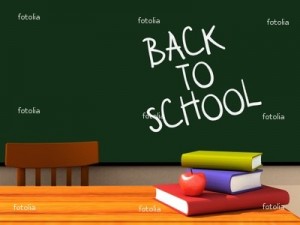 Welcome Back To School For 2023-2024
Welcome Back To School For 2023-2024
By Juliet Gray-Williams
I’m a parent, grandparent, community advocate and an educator, who genuinely believes “Teachers makes our student’s count.” It is my purpose to remind & update Parents /Readers on expectations for a productive school year.
During the month of July emphasis was placed on Mental Health Awareness. As we have had our children occupied with vacation, day care, summer camps, or just at home while resting and relaxing. As parents would say, “Eating up all my groceries.” But none the less, learning never stops. Each day we are blessed with life, a new day, new grace, and new mercies. Full of learning opportunities, more importantly survival skills.
There is power in Education and we should not take it lightly as to the options parents have. There’s accessibility to public, private, Christian, charter, Montessori, magnet, etc. It’s about finding the right school for your child. Now that is a whole other story all by itself.
Action Steps for Parents:
On July 19th, we went to take our G-Baby to her Dr.’s Appt. for her parents who were working. We drive up to Pediatric Associates office. It was packed but our goal was to retrieve her physical & Immunizations for the upcoming school year.
- Visits: for Immunizations/Physical Forms
- Registration Forms: Call your child’s school for upcoming dates such as Open House etc.
- Supply Lists
- Uniforms
- Broward County Schools Bus Transportation (754)321-4400Parent Teacher Organization (PTO)
- Please join your child’s School Advisory Council (SAC), Parent Teacher Association (PTA)
- Parent Teacher Organization (PTO)
- Bookbag Give-Aways/ Back to School Bash (Contact your city municipalities for Dates &Times)
- Volunteering: Time is never wasted
- Children Services Council (954) 377-1000
2-1-1-Broward
For a successful school year, “Parental Involvement” is essential. We desire growth in our students be it physically, socially, emotionally, and academically.
Let’s stay informed and involved in your child’s educational endeavors. This is crucial from Pre-K through 12th grade.
As teachers, Parents we need you, we can’t do it alone. We are a team!
Communication is empowering. Share with your child’s school personnel when there are concerns, issues, and whatever support that may be needed. As we live life, there are traumatic circumstances yet there are many resources available for our families. Please don’t be afraid to ask for help. There’s help in our community that will strengthen, enhance our parents, children, families, and schools.
The old Proverbs reminds us “It Takes a Village to Raise a Child.” Our entire community is responsible for making provisions and interacting positively with children for them to experience and grow in a safe and healthy environment.
Have an awesome school year!
*******************************************************
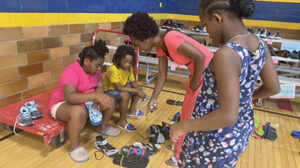 Families feel pinch of back-to-school spending
Families feel pinch of back-to-school spending
Kewanna Heard, a mother of seven, helps her children pick out shoes while at a back-to-school event in Indianapolis offering free school clothes and supplies.
By Elizabeth Gabriel/WFYI News
Hundreds of families recently withstood the sweltering July heat to stand in line at a free school supplies event in Haughville, a neighborhood on the Near Westside of Indianapolis. It was nearly double the number of families compared to last year who showed up to the Christamore House community center. Parents said the surge in inflation makes it harder for them to afford back-to-school items.
“The price of everything went up — gas, food prices — everything just went up high,” said Kewanna Heard, a mother of seven children. “And your job is not paying you as much to sustain your living. So it’s been real hard.”
Across all consumer products, including those Heard was concerned about, the latest inflation rate was about 9 percent. Even though some Hoosier wages have increased by roughly 4 to 7 percent — depending on the industry and the particular job — it isn’t enough to keep up with the year-to-year price increases the country hasn’t seen for almost 40 years, said R. Andrew Butters, an assistant professor of business economics and public policy at Indiana University.
The labor market is strong, Butters said, and some households have increased income, but it’s not enough.
“Those gains are still probably unlikely to fully compensate the households for the increase in costs,” he said.
Last school year there was a record-breaking increase in back-to-school spending because people were buying more items as students returned to in-person learning following the height of the pandemic.
This year, families are expected to spend even more – $864 on back-to-school items, roughly $15 more than last year, according to the National Retail Federation.
But this year the spending increase is due to everything – including school supplies – being more expensive. Butters said families on average are spending roughly 10 percent more on overall living expenses than they did in previous years.
The latest Consumer Price Index results showed the most significant inflation increases have come from energy components, such as household utility bills and gas for vehicles, as well as groceries. That leaves less money to spend on students’ needs, like new clothes, notebooks, calculators and general classroom supplies some teachers request.
“If you have to choose between getting your kid crayons and putting food on the table, you’re definitely going to pick the food on the table,” said La’Toya Pitts, chief executive director of the Christamore House.
Although the economic status varies for Haughville residents, the area is home to many low-to-zero-income families. Pitts said roughly 95 percent of the population that they serve are Black and Brown families. The center typically hosts supply drives once or twice a year with a projected turnout of 200 to 250 families per event.
The Haughville native said the surge in prices is affecting everybody. Families who have never struggled to provide for their children are now asking for support, from gift cards to grocery stores to bus passes or other transportation needs. But the gap between families who already lacked access to resources is even bigger.
Inflation causes strain for donation drive organizers
The Christamore House’s supply drive was organized by four high school students participating in an eight-week internship sponsored by the Bank of America Student Leaders program. The Rushville-based organization Changing Footprints, which has several Indianapolis offices, donated 700 pairs of shoes. The Black Employee Network and an anonymous pastor also donated supplies. The Christamore House used roughly $2,500 to purchase about 300 school uniforms that were distributed for free.
Even with the community support, student organizers said more is needed to help local families. When shopping for supplies, they found their dollars didn’t stretch as far as they used to.
“For instance, $200 doesn’t go a lot towards backpacks anymore,” said Nik, a summer intern and a senior at Park Tudor High School. “That’s 10 backpacks. When we’re trying to serve 500 people that’s just not something we can afford as a local nonprofit.”
Heard, the mother of seven, arrived late and missed out on the free uniforms and some of the school supplies. Now she’s trying to find other places that will provide free school clothes so she doesn’t have to rack up her credit card debt.
“We had to stop going to unnecessary places,” Heard said. “So we do everything in our house now. We’ve cut back on certain things like the stuff they used to eat, like name brand foods. We’ve been switching them out for the non-name brand foods. Everything is limited right now.”
Indiana lawmakers are debating in a special legislative session how to best help Hoosiers struggling with inflation-related costs. But some of the energy price increases are largely out of the control of state legislators until international relationships, such as the war in Ukraine, are under control.
Butters, the IU assistant professor, hopes to see lower inflation rates by the end of the year as the Federal Reserve works to combat inflation, families return to the labor market and supply chain issues decrease.
*******************************************************
 Healthy Smiles for the Back-to-School Season!
Healthy Smiles for the Back-to-School Season!
Phanord & Associates, P.A.’s Dentist Duo Encourages Parents to Schedule a Dental Visit before School starts
Submitted by Luisa Martinez
MIAMI, FL – As the back-to-school season approaches, Phanord & Associates, P.A. encourages parents to ensure their kids return to the classroom with bright and healthy smiles. While the summer offers more time to take care of your kids’ oral health, the mad rush of the start of the school year can make you lose track of your kid’s oral care routine. A dental visit before school starts is vital to fighting diseases such as cavities and prevention and early detection helps to avoid pain and school absences.
“Routine checkups play a crucial role in preventing dental issues and maintaining optimal oral health,” said Dr. Kevin Phanord. “A healthy smile boosts confidence and ensures students can focus on their studies without dental discomfort, “added Dr. Kyle Phanord.
To keep your children’s oral health in top shape, here are a few essential back-to-school oral health tips:
- Back-to-School Checkup: The American Dental Association (ADA) recommends making a dental checkup part of the back-to-school routine.
- Healthy Snacks and Lunches: What your kids eat contributes to oral health. Be sure to choose tooth-friendly options like cheese, yogurt, veggies, and fruits when packing your kids’ lunches.
- Brushing and Flossing: Encourage regular brushing and flossing by setting up a schedule or calendar as a helpful reminder to help your little ones maintain healthy teeth and gums.
- Replace your kids’ Toothbrush every 3-4 months. Frayed bristles on a worn toothbrush are less effective at cleaning teeth and can harbor bacteria. Be sure to include a new toothbrush for your kids at the top of your back-to-school shopping list.
***********************************************************
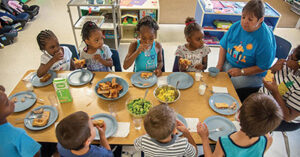 Tips for Encouraging Exploration and Learning in the Kitchen
Tips for Encouraging Exploration and Learning in the Kitchen
By Family Features
(Family Features) – Planning, preparing, serving and cleaning up after mealtimes are skills that can be beneficial to everyone. Yet when it comes to meal prep, many families find it easier to tell children to go play rather than bringing them into the kitchen to help create meals.
“One of the best ways to encourage children to try new foods or simply eat their vegetables is to allow them the opportunity to plan and prepare a meal,” said Emily Hicks, a registered dietitian nutritionist for KinderCare Learning Centers. “Involving children in meal planning, preparation and serving in age-appropriate ways helps give them some autonomy in a world in which they often feel they do not have many choices. This can help reduce stress and food fights at mealtime, creating a more peaceful and enjoyable experience for everyone.”
Meal preparation can also bring certain classroom lessons such as counting and fractions to life as children measure ingredients. It can also be an opportunity for an impromptu science lesson about the parts of plants and animals people eat and the nutritional benefits of healthy foods.
Consider these tips to get kids more involved in mealtimes:
Choose mealtimes when the family is typically together and make preparation a team effort. Allow children to pick out vegetables or other items at the grocery store (or from the fridge, freezer or pantry) to prepare. Alternatively, if you have a few meal options planned for the week, children can help decide what to make on which days. The key is to empower children to make choices, thus helping develop a sense of responsibility and encouraging variety in food.





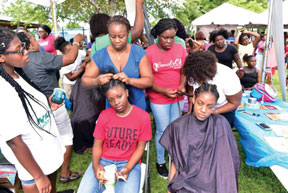
Be the first to comment